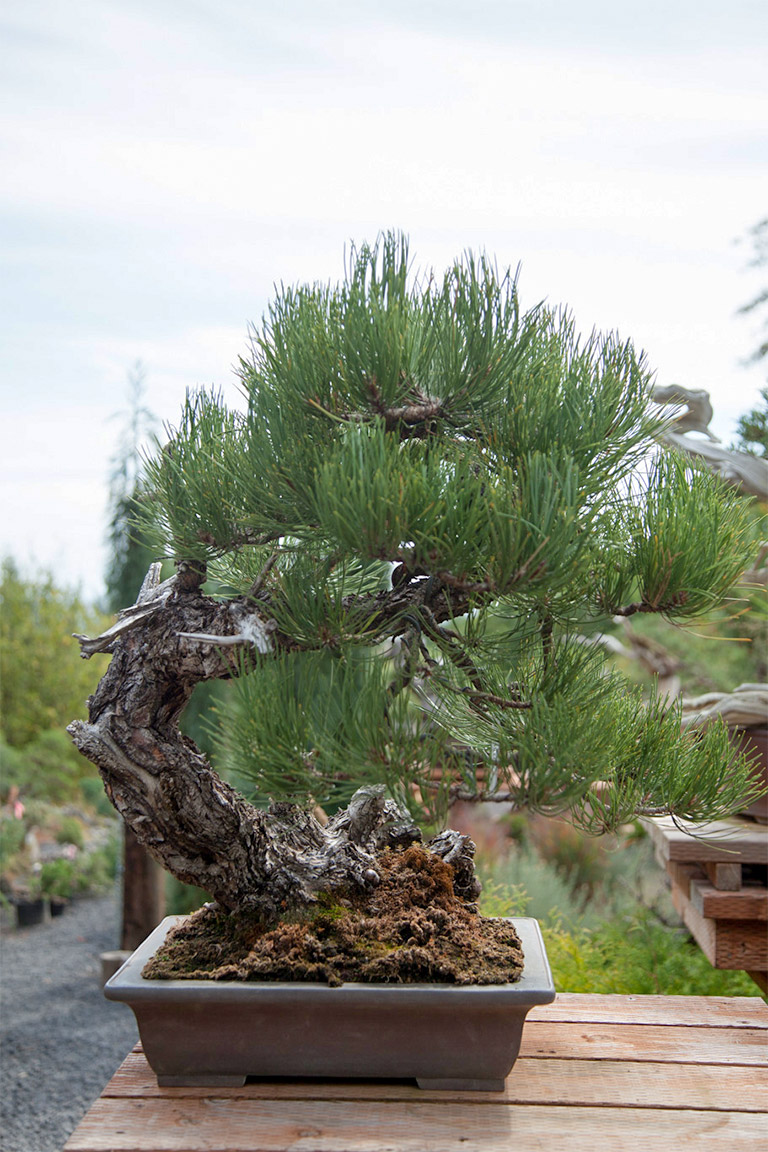Ponderosa pines are the most widely distributed pine in North America and are found exclusively in the more mountainous regions of the west. There are five recognized subspecies, in the central Rockies, southern Rockies, high plains, Sierra’s, coastal range of northern California and Oregon. They are one of the most common native pines here in California, usually growing between 3,000 and 7,000 ft elevation.
Ponderosas are prized in bonsai for their rough, flaky bark, contorted trunks, flexible limbs and dramatic deadwood. Collected specimens can be wildly sculpted by their environment, resulting in beautiful twisted trunks, limbs and deadwood. In the mountains they can be found growing in pockets in the rock, stunting their growth. Many small collected specimens can be a hundred years old or more. If you find the right tree it can be easily collected with a great chance at survival, essentially removing it from a natural, rock pot and replanting in one at home. If you choose the wrong tree it might take dynamite to get it out of the rock fissures its locked into. Collected trees should be allowed to recover until they show strong growth again before working them.
The only negative about ponderosa pines is their naturally long needles. They will reduce with proper management, and some have successfully grafted Japanese black pine (JBP) foliage onto ponderosa trunks. Once established ponderosa back bud well with proper technique. They should not be treated like JBP though. Back budding is stimulated by removing terminal buds in the fall. As more branches with terminal foliage are established (a higher density of needles), the needles will gradually get smaller. Like any pine this should only be done on healthy trees. Ponderosa pines take well to pot culture. They prefer things on the drier side so use coarse, free draining substrate. Once established they will want full sun, but when stressed they benefit from partial shade and frequent misting. They are very cold hardy. Subspecies that come from the Rockies may have a more difficult time with our mild winters. We would probably do better with more coastal subspecies.

Photo courtesy of Bonsai Mirai
Styling ponderosa pines usually features their rugged trunks, bark and deadwood. Don’t expect a ponderosa to ever look as well groomed as a JBP, unless of course, you graft JBP foliage on it. The wild nature of collected ponderosa is usually reflected in the styling. Limbs are extremely flexible, allowing severe bends to bring the terminal foliage back closer to the trunk line. It does take a long time for these flexible limbs to set in position (two years or more), so be prepared to repeatedly wire them. The junctions of limbs to trunk are weak and easily torn so caution is called for. They make great medium to large size trees, as well as wonderful literati. Tips on ponderosa pine management and styling can be found on Ryan Neil’s site (https://bonsaimirai.com/node/748). Andy Smith at Golden Arrow Bonsai (http://www.goldenarrowbonsai.com/) has info and collected trees for sale.
The most complete discussion on collecting, maintaining and styling ponderosa pines is Larry Jackel’s book, Ponderosa Pines as Bonsai. Unfortunately, it seems to be currently out of print. It can be found on Amazon, but for about 10 times its list price, so check out club libraries and other bonsai friends for potential access to it. Ponderosa pines are a great Native American species for bonsai that really reflect the western US.

